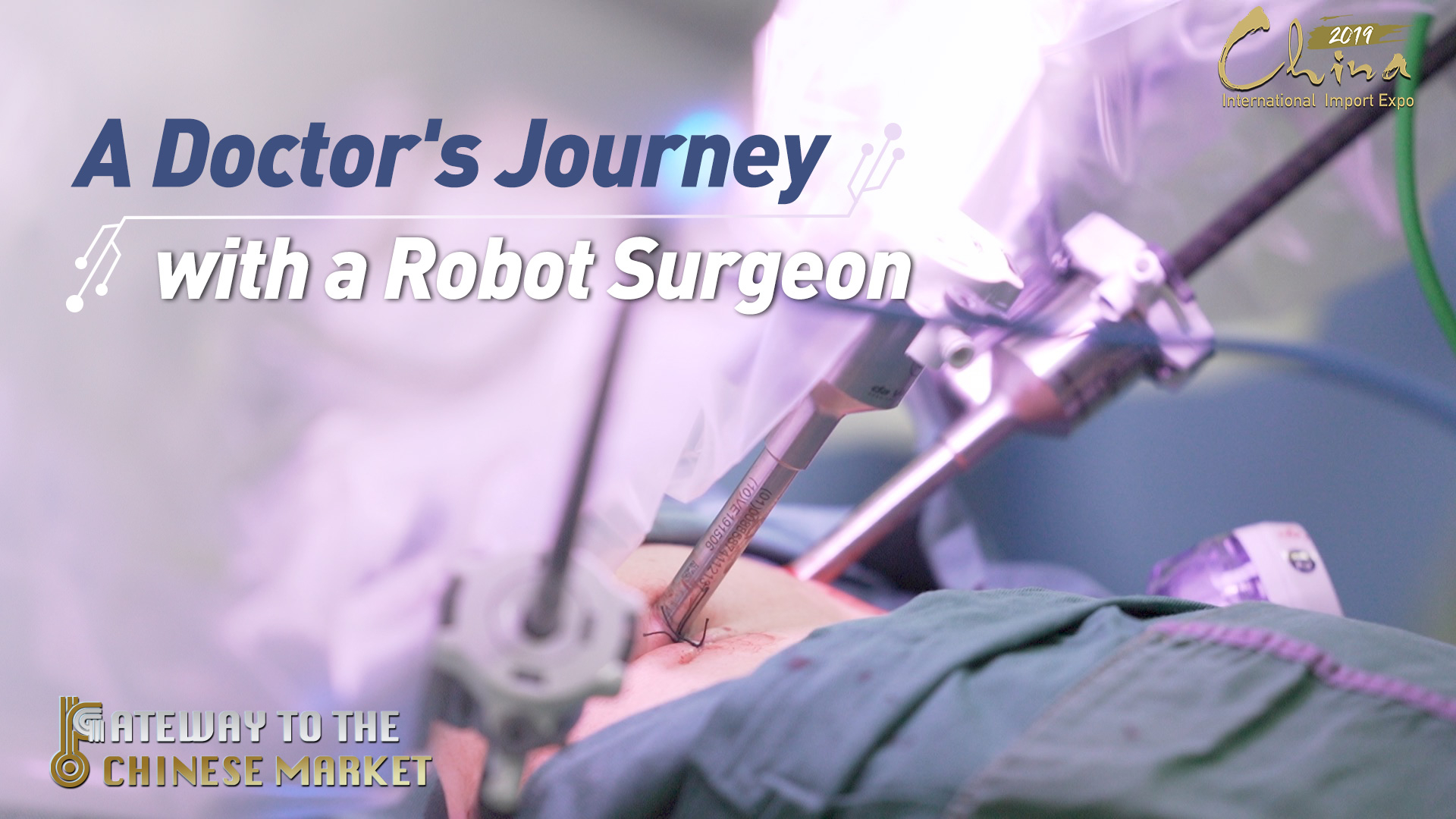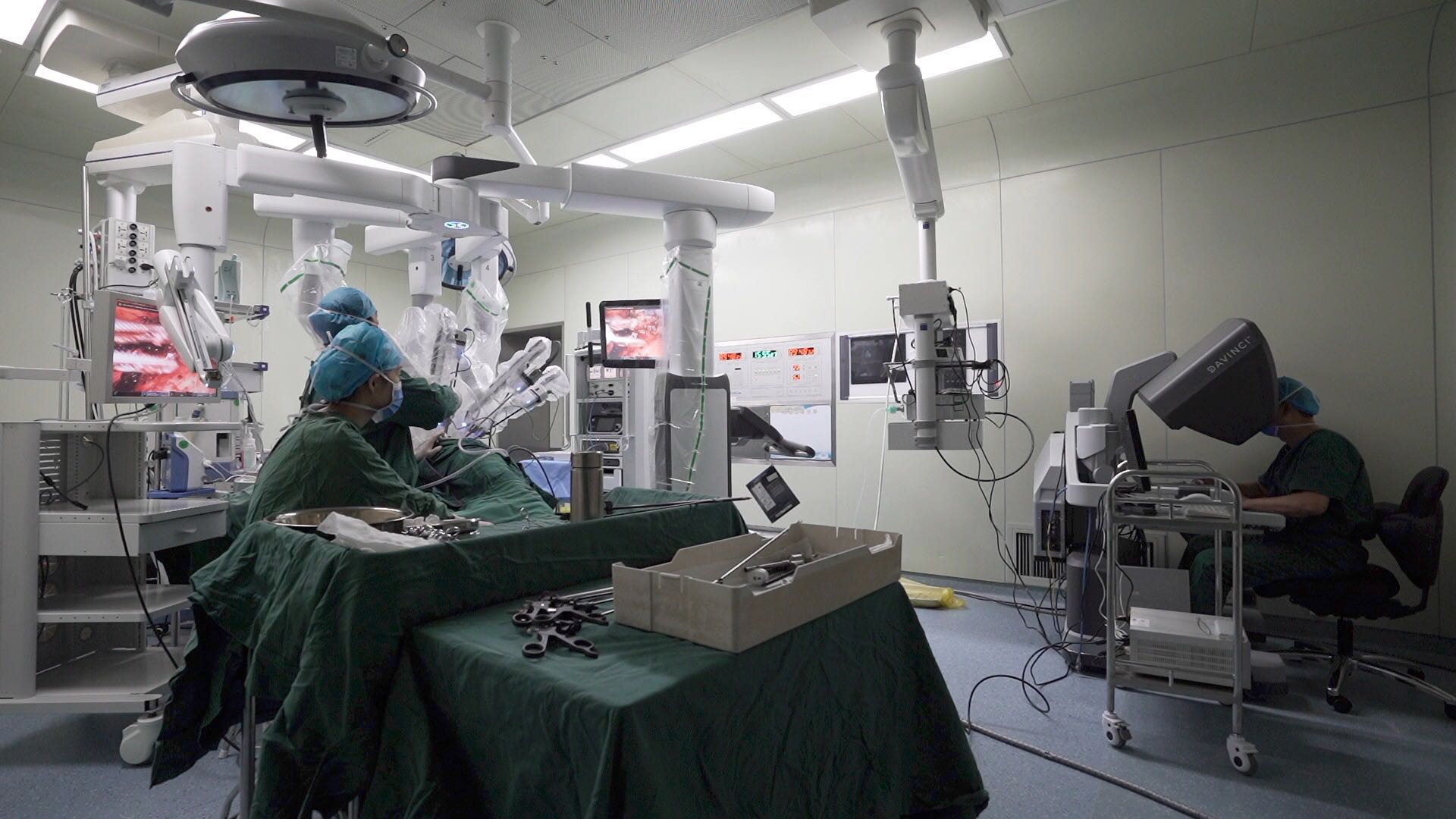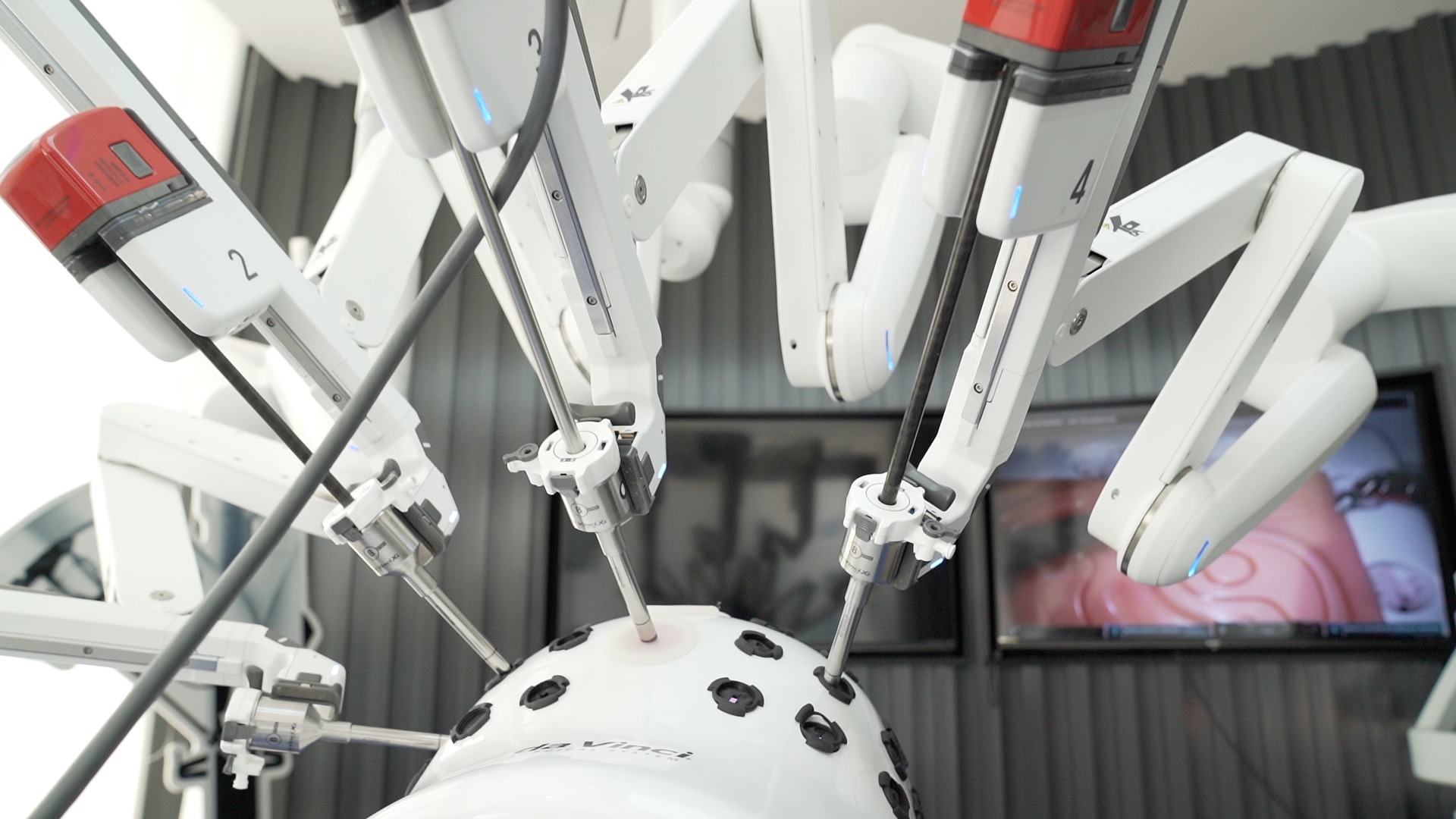05:51

Surgeons have, for centuries, been pursuing precision, flexibility and control in their procedures. Now, with the help of surgical robots, more and more patients have been able to heal earlier, with less pain and blood loss.
'A completely different experience'
From open surgery to minimally invasive surgery, from blood and guts to mini cuts: The Deputy Dean of the First Affiliated Hospital of Nanchang University Wang Gongxian described robotic surgery as "a completely different experience" compared to open surgery and laparoscopy (minimally invasive surgery).
"When we had open surgery before, we had to make a big cut and dissect, detach and stitch from the opening with our naked eye," said Wang.
"But now we can just operate a console instead of operating directly on the patient," Wang continued to explain. "With the same pair of eyes, we can see much more clearly."
Surgical robotics means the brain of the doctor combines with the unique advantages of the robot: while human arms can't rotate 360 degrees, robots can.
"It makes our already nimble doctor hands even more fine-tuned and precise."

Surgeons are conducting a robotic kidney surgery with the da Vinci surgical system in the First Affliated Hospital of Nanchang University in Nanchang, Jiangxi, China. /CGTN Photo
Surgeons are conducting a robotic kidney surgery with the da Vinci surgical system in the First Affliated Hospital of Nanchang University in Nanchang, Jiangxi, China. /CGTN Photo
In 2014, the First Affiliated Hospital of Nanchang University has introduced its first da Vinci system.
Consisting of three parts - a surgeon console, a patient cart and a vision cart, the system allows the chief surgeon to fully conduct a surgery by operating the console instead of cutting a cut and operating directly on the patient.
The da Vinci surgical system was born in United States in 1999. Made by a Silicon Valley medical technology company called Intuitive Surgical, the system enables "intuitive" control of surgical instruments with four arms and a 3D viewer.

The da Vinci XI Surgical System exhibited in Intuitive Surgical-Fosun headquarters in Shanghai, China. /CGTN Photo
The da Vinci XI Surgical System exhibited in Intuitive Surgical-Fosun headquarters in Shanghai, China. /CGTN Photo
Who needs robot surgeons?
Last year, the da Vinci surgical system made by the American company Intuitive Surgical was exhibited in the first China International Import Expo (CIIE).
"Many hospitals came to us to express their desire to purchase our systems," said Eric Pan, the CEO of Intuitive Surgical-Fosun, a joint venture of American Intuitive and Chinese Fosun based in Shanghai.
As of now, 102 da Vinci robotic systems have been installed in 84 hospitals across the Chinese mainland. Globally, more than 5,000 da Vinci surgical platforms are currently in use.

So far, 102 da Vinci robotic systems have been installed in 84 hospitals across the Chinese mainland. /CGTN screenshot
So far, 102 da Vinci robotic systems have been installed in 84 hospitals across the Chinese mainland. /CGTN screenshot
"If you compare (the number of da Vinci system installations) with the United States or other advanced nations, the system installation per capita or per hospital is still far below those of the advanced nations," Pan said.
"We (China) have some of the world's most talented surgeons here," added Pan. "With the rapid growth of da Vinci installations, I hope that China will gradually become a leader in clinical applications of robotic surgery."
Wang echoed Pan saying "there should be no national boundaries for technologies or devices," adding that the surgical systems "exist to serve the patients better."
Filmed by Su Kun, Huang Yichang
Voice-over: Rory Coen
Writer: Wang Tianyu
Graphic designers: Pan Yongzhe, Sa Ren, Liu Shaozhen
Executive producer: Zhang Xiaohe
Supervisor: Mei Yan